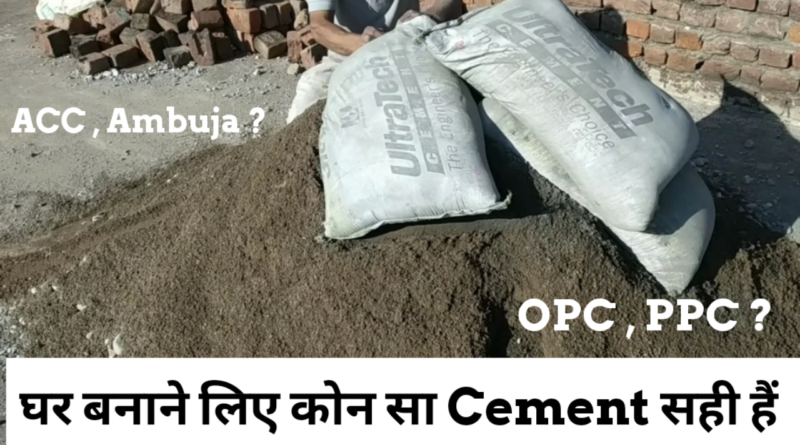Type of cements and its uses
- Ordinary Portland Cement (OPC)
- Portland Pozzolana Cement (PPC)
- Low Heat Cement
- Sulphates resisting cement ( SRC)
- Rapid Hardening Cement
- Quick setting cement
- Expansive cement
- Hydrographic cement
Ordinary Portland Cement (OPC)
This type of cement use in constructions when there is no exposure to sulfates in the soil or groundwater .This cement is suitable for all type of concrete construction.
It is most widely produced and used type of cement around the world with annual global production of around 3.8 Million m3/ yr
Portland Pozzolana Cement (PPC)
Portland pozzolana cement is produced either by grinding together, portland cement clinkers and pozzolana with the addition of gypsum or calcium sulfate or by intimately and uniformly blending portland cement and fine pozzolana
These type of cement produce low heat of hydration & has greater resistance to attack of chemical agencies than OPC.
These type of cement mainly suitable for Plaster , construction in sea water, hydraulic works and for mass concrete works.
Low Heat Cement :-
Low heat cement is manufactured by increasing the proportion of C2S and by decreasing the C3S and C3A content. This cement is less reactive and its initial setting time is greater than OPC.
It is used in mass concrete constructions: the rise of temperature in mass concrete due to progression in heat of hydration — cause serious cracks.
So it is important to limit the rate of heat evolution in this type of construction, by using the low heat cement.

Sulphates resisting cement ( SRC)
This cement has reduced contents of C3A and C4AF. It is used to reduce the risk of sulphate attack on concrete and thus is used in construction of foundations where soil has high sulphate content.
This type of cement is used in the construction of foundation in soil where subsoil contains very high proportions of sulfate .
Low early strength. Its resulted heat of hydration is little higher than that resulted from low heat cement. Its cost is higher than ordinary Portland cement – because of the special requirements of material composition, including addition of iron powder to the raw materials.
Rapid Hardening Cement
Rapid hardening cement is very similar to ordinary portland cement (OPC). The strength of this cement at the age of 3 days is almost same as the 7 days strength of OPC with the same water-cement ratio.
This type develops strength more rapidly than ordinary Portland cement. The initial strength is higher , but they equalize at 2-3 months
Setting time for this type is similar for that of ordinary Portland cement The rate of strength gain occur due to increase of C3S compound, and due to finer grinding of the cement clinker ( the min. fineness is 3250 cm2 /g )
Rate of heat evolution is higher than in ordinary Portland cement due to the increase in C3S and C3A, and due to its higher fineness .
This type of cement does not use at mass concrete constructions.
The main advantage of using rapid hardening cement is that the form-work can be removed earlier and reused in other areas which save the cost of form-work.
Quick setting cement
The difference between the quick setting cement and rapid hardening cement is that quick setting cement sets earlier while rate of gain of strength is similar to Ordinary Portland Cement, while rapid hardening cement gains strength quickly.
Form-works in both cases can be removed earlier.
Expansive cement
This type of cement is mainly used for grouting anchor bolts and pre -stressed concrete ducts . It does not shrink during and after the time of hardening but expands slightly with time is called expansive cement.
Hydrographic cement
It is prepared by mixing certain materials ( stearic acid, oleic acid, … etc by 0.1-0.4%) with ordinary Portland cement clinker before grinding, to form water repellent layer around the cement particles, so as the cement can be store safely for a long period. This layer removes during mixing process with water.
Hydrophobic cement is mainly used for the construction of water structures such dams, water tanks, spillways, etc

